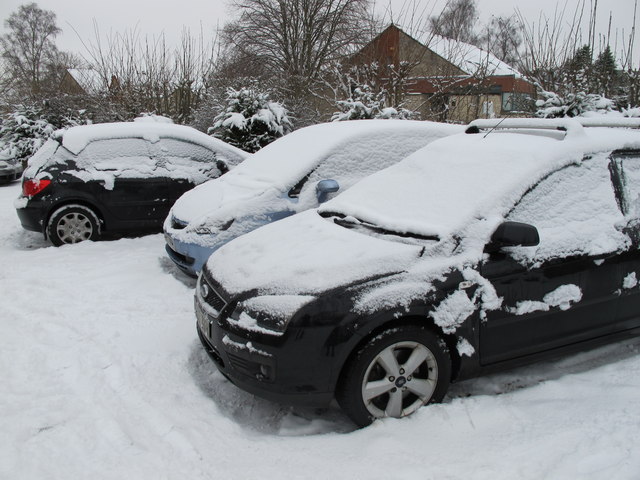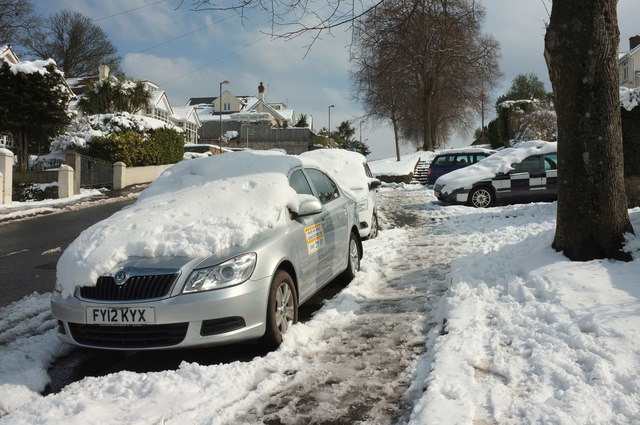It’s very, very cold, and your vehicle is sleeping outside? When the temperature drops below -5°C, certain gestures should be avoided.
1. Do not apply the handbrake.
You park your car in front of your house as you do every night, and the night promises to be icy cold. Do not apply your parking brake!
Chances are you won’t be able to release it in the morning because the frost prevents the free movement of parts, especially the brake shoe, which can get stuck. If you’re sure no one will bump you, you can shift into gear. Otherwise, block your vehicle with wooden cleats or cinder blocks, one in front of each front wheel.
Note: engaging in gear to stop the car is a common habit. However, it is not without risk if a vehicle hits your car while parking. There is a risk of damaging your gearbox with a huge bill to pay.
2. Do not defrost with hot water.
The frost has done its job, and your windshield is covered with a layer of ice that makes you blind behind the wheel. It is tempting to try to melt this ice by spraying it with hot water, but this is something to avoid because you could see your windshield crack!
I prefer cold water, which will work anyway, or better yet, a de-icing bomb, which can be found for $5 in the car department.
A reasonable precaution: place a flat cardboard box on the windshield at night to prevent frost from settling on it.
Good to know: the glass breakage option offered by insurers on so-called “third party” contracts should be considered. It is often inexpensive and can save you a lot of money. A windshield can cost more than $500.
3. Take the time to get started

In icy weather, your car will have to produce more energy to start. This is because the oil is made more viscous by the cold, numbing all moving parts.
Besides, the battery is subjected to severe stress: do not use your starter for more than 5 seconds at a time! It’s better to try 3 or 4 starter strokes rather than a single extended test.
When you start the engine, press the clutch pedal fully down so that the motor turns freely. Even if you’re in neutral, the clutch disc rubs against the engine shaft. And when it’s cold, it can stick.
4.Warm-up the engine
Once the car is started, don’t leave immediately, but wait two minutes, at idle, without wrapping the engine. No need to accelerate! In the first ten minutes, drive calmly, without sudden acceleration and without revving up. Remember that the cold oil is thicker, and all moving parts are struggling more than usual.
Don’t turn on the heater right away, even if the temptation is great. By heating the passenger compartment, you delay the engine’s temperature rise. Wait until you’ve driven a few miles or ten minutes.
5. Watch out for the windows!
The windows are raised and lowered by a relatively powerful electric motor. Although there is usually a safety device that stops the window from going up in case of an obstacle (a child’s hand…), the descent remains free. In case of frost, do not attempt to lower your windows if they are covered with frost.
The mechanism could jam and break the plastic parts that hold and guide the window in its rail. Wait until the vehicle is warm and the windows are defrosted before opening.
Note: Silicone-based lubricant sprays are commercially available. In winter, spraying this product in the rails on each window’s left and right sides is a reasonable precaution because it facilitates the window’s movement.
6. Do not force the locks
Cold can also block the door opening mechanism and even stick the doors to the car. If you press on the remote control and nothing happens, try to open it manually if you have a key. But don’t force it, or you might break the key!
If you can’t open it, spray a defroster lock. This product, sold in the form of a small bomb, can be found in car centers and supermarkets. Please keep it on you, not in the glove compartment! Alternatively, you can spray warm water on the lock to try to defrost the mechanism.
Once the lock is open if the door is glued to the vehicle, do not force it: you will loosen the seals. Run lukewarm water from the top of the door to defrost the joints along their entire length.
These precautions apply at the height of winter.
Read more here:





One thought on “Freezing Weather and Vehicle: 6 Things to Avoid!”